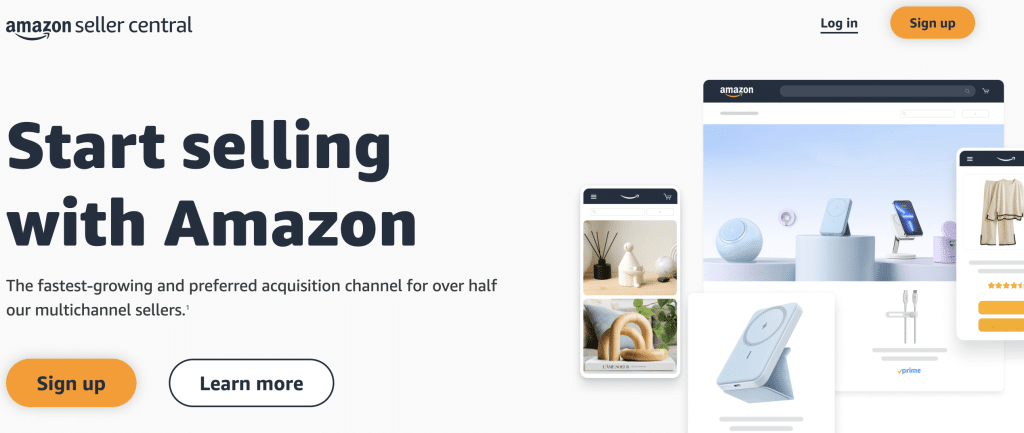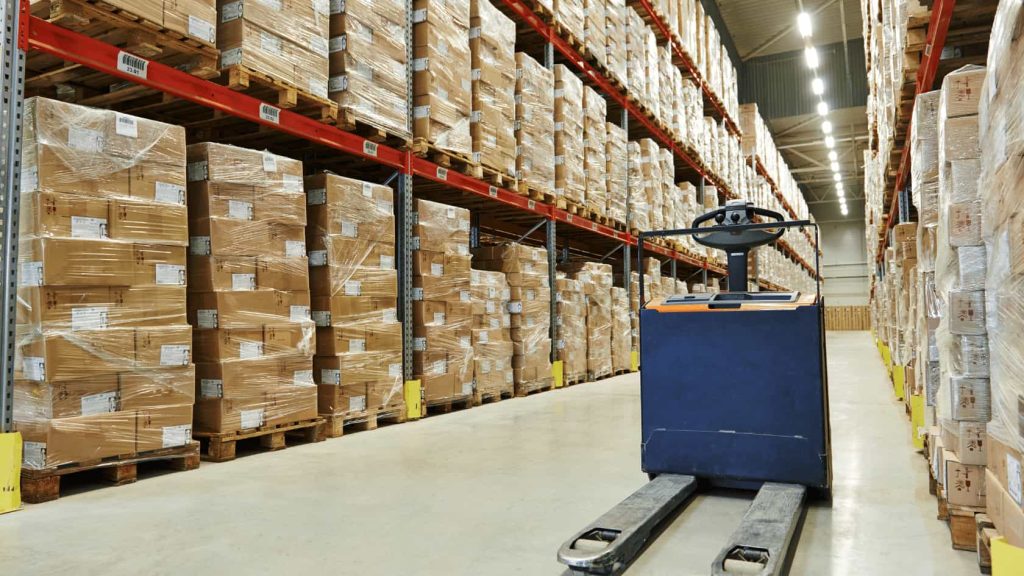Retail arbitrage on Amazon offers an accessible pathway to profitability for entrepreneurs looking to capitalize on price discrepancies between brick-and-mortar retail stores and the online marketplace.
By purchasing discounted products in physical stores and reselling them on Amazon at a higher price point, individuals can generate significant profits.
This article delves into the intricacies of retail arbitrage, providing strategies for sourcing, listing, and scaling your business on Amazon, alongside inspiring success stories from those who have thrived in this venture.
What is a Retail Arbitrage and Its Appeal?

Retail arbitrage is a compelling business model that involves purchasing products at a lower price from retail outlets and reselling them at a higher price on platforms like Amazon. The essence of retail arbitrage lies in capitalizing on price discrepancies between different marketplaces to earn a profit. This practice is not only accessible to seasoned entrepreneurs but also to those new to online selling, making it an attractive entry point into the world of e-commerce.
The appeal of retail arbitrage stems from its simplicity and the potential for significant returns on investment (ROI). It is a strategy that can be employed with a variety of products, from electronics to toys, and does not require a large upfront investment. Here are some key advantages:
- 1. Opportunity to find discounted products for resale
- 2. Great ROI with the right product selection
- 3. Accessible to individuals without a background in retail
Retail arbitrage offers a low barrier to entry and the possibility for substantial profits, which explains its growing popularity among new and experienced sellers alike.
While retail arbitrage can be lucrative, it also comes with its challenges, such as the time investment required to find profitable deals and the scalability of the business model. Nonetheless, for many, the benefits outweigh the drawbacks, making retail arbitrage a worthy consideration for those looking to maximize profits on Amazon.
The Process of Sourcing Products for Amazon
The journey of retail arbitrage on Amazon begins with the meticulous process of sourcing products. Sellers must first decide on the types of products they wish to sell, which involves a deep dive into market research and a solid understanding of digital selling tools. This foundational step is crucial for identifying items that not only have a high demand but also offer a reasonable profit margin after accounting for Amazon’s fees and the costs of sourcing.
To effectively source products for Amazon, sellers can employ various methods, including online arbitrage from other marketplaces or directly from brick-and-mortar retail stores. Each method requires a strategic approach:
- 1. Analyzing demand and profitability
- 2. Understanding the competitive landscape
- 3. Ensuring the sourcing cost is lower than the Amazon price floor
It’s essential to factor in all associated costs when sourcing products, including Amazon’s referral fees and fulfillment expenses, to accurately calculate potential profits.
Once potential products are identified, sellers must refine their choices through keyword optimization, A/B testing, and strategic pricing adjustments. Engaging with customers through reviews is also a key part of the process, as it can influence the perceived value and demand for the products.
Calculating Profit Margins and Fees
To ensure profitability in retail arbitrage, it’s essential to calculate profit margins and fees accurately. Begin by determining the cost of purchasing your product, including the price paid to the supplier and any shipping costs. Then, subtract this total cost from the product’s selling price on Amazon to find the gross profit per unit.
Next, account for Amazon-specific expenses such as storage, selling, and referral fees. These can vary based on the category and size of the product, so use Amazon’s fee calculators to get precise figures. Additionally, consider other costs like Amazon PPC advertising and any third-party tools or subscription services you use.
Finally, set a minimum profit threshold for each product. A common recommendation is at least $3 profit per unit. To assess the return on investment (ROI), divide the expected profits by the product cost. This calculation helps you decide if a product is worth the investment.
Remember, pricing strategically is key to staying profitable. Balance your desired profit margin with the market demand and competition to find a price point that offers value to customers and aligns with their expectations.
Strategies for Successful Product Sourcing

Identifying High-Demand Products
To maximize profits in retail arbitrage, identifying high-demand products is crucial. These are items that consumers are actively seeking, but which also have manageable levels of competition. A strategic approach involves using tools like the AMZScout PRO Extension to find profitable high-demand products and analyze niche demand.
When evaluating potential products, consider the following:
- 1. The number of sellers: A moderate number indicates a sweet spot for arbitrage.
- 2. Net margins: Look for products with over 50% net margins for better profit potential.
- 3. Date available: Products newer to Amazon might offer fresh opportunities.
It’s essential to balance demand with competition. Products in high BSR categories with multiple best-sellers suggest a healthy demand that new listings could tap into. Conversely, categories dominated by a single product may be too competitive for new entrants.
Remember, even if a product is acquired at a significant discount, it won’t translate to profit if the demand isn’t there. Use comprehensive tools like the AMZScout Product Database to simplify the research process and uncover the most profitable items to resell.
Utilizing Discounts and Clearance Sales

Retail arbitrage sellers can capitalize on clearance sales to source products at significantly reduced prices. These sales are often a strategic move by retailers to clear out inventory and make room for new stock, which presents a lucrative opportunity for resellers. By purchasing these discounted items, you can offer them on Amazon at a competitive price while still maintaining a healthy profit margin.
To effectively utilize discounts and clearance sales, it’s important to stay informed about upcoming sales events and regularly check for markdowns.
Here’s a list of steps to help you source clearance items effectively:
- Monitor local flyers and online marketplaces for sales announcements.
- Visit the clearance sections of popular retailers, both in-store and online.
- Consider trade-in programs for sourcing used products at lower costs.
- Experiment with bundling and promotions to enhance product value and appeal.
Remember, the goal is to acquire inventory at the lowest possible cost without compromising on quality. This strategy not only boosts your profit margins but also allows you to be competitive in the Amazon marketplace.
Leveraging Seasonal Opportunities
Seasonal trends offer a unique avenue for retail arbitrage, where demand for certain products spikes during specific times of the year. By recognizing seasonal trends, such as the need for outdoor products in summer or holiday-themed items in winter, sellers can strategically stock up and cater to these demands.
It’s essential to stay ahead of the curve by planning inventory in advance and monitoring market trends for emerging niches. This proactive approach can lead to significant profit margins when timed correctly.
To effectively leverage seasonal opportunities, consider the following steps:
- 1. Use tools like DataBrill to identify products with high seasonality.
- 2. Analyze market trends and price fluctuations to anticipate demand.
- 3. Stock up on inventory before the peak season begins.
- 4. Monitor your competition and adjust pricing strategies accordingly.
Understanding and acting upon these seasonal fluctuations can be the difference between an average and a highly profitable arbitrage year.
Navigating Amazon’s Platform for Arbitrage

Setting Up Your Amazon Seller Account
Before diving into the world of retail arbitrage on Amazon, establishing your Amazon Seller Account is a crucial first step. The setup process is designed to be user-friendly and can be completed in a few straightforward steps:
- 1. Go to the Amazon Seller Central website and select ‘Register Now.’
- 2. Choose between an Individual or Professional account based on your business scale and needs.
- 3. Fill in the necessary details such as your business name, address, and bank account information.
- 4. Agree to the terms and conditions and complete the identity verification process.
Once your account is active, you’re all set to list products and start selling. Remember to keep your business information accurate and up-to-date, as Amazon will verify these details to maintain a trustworthy marketplace.
It’s important to note that the name of your Amazon store can be changed later, so don’t let this detail stall your progress. After setting up the basics, you can focus on the finer aspects of your account, such as UPC info, diversity certifications, and manufacturer details.
Understanding Amazon’s Fee Structure
To maximize profits in retail arbitrage, it’s imperative to grasp the intricacies of Amazon’s fee structure. Amazon’s fees can significantly impact your profit margins, so a clear understanding is crucial for pricing your products competitively. These fees include referral fees, which range from 7-15% per item sold, and fulfillment fees, which vary if you’re using Fulfillment by Amazon (FBA) or managing orders yourself.
- 1. Referral fees: 7-15% per item sold
- 2. Fulfillment fees: Varies (FBA or self-fulfilled)
- 3. Monthly subscription: Professional accounts
- 4. Additional costs: Inventory, refund management, high-volume listing fees
By incorporating these fees into your pricing strategy, you can ensure that each sale contributes positively to your overall profitability. Moreover, staying compliant with Amazon’s selling policies and guidelines is essential to avoid account suspensions and maintain a good seller reputation.
Remember, while Amazon’s fees are a cost of doing business, effective management and understanding of these expenses are key to maintaining healthy profit margins.
Optimizing Product Listings for Maximum Visibility
To ensure your product listings stand out on Amazon, incorporating relevant keywords is crucial. These keywords should be strategically placed in your title and description to enhance search visibility. Remember, a well-optimized listing can significantly increase your product’s discoverability to potential buyers.
A+ Content is another powerful tool to optimize your listings. It allows you to create a richer shopping experience by adding more images, videos, and comprehensive product details. This not only makes your listing more attractive but also helps customers make informed decisions.
Here are some tips for optimizing your product listings:
- 1. Be clear and transparent in your descriptions.
- 2. Include key attributes such as brand, color, size, and material.
- 3. Utilize strategic keyword placement while keeping titles reader-friendly.
By focusing on these elements, you can create a compelling virtual storefront that captures customer interest and drives sales.
Scaling Your Retail Arbitrage Business

Investing in Wholesale Opportunities
When scaling your retail arbitrage business, transitioning to wholesale buying can be a significant growth lever. By purchasing directly from manufacturers or authorized distributors, you can secure a consistent supply of inventory at discounted rates. This method not only ensures product availability but also enhances profit margins due to the lower cost per item when buying in bulk.
Wholesale arbitrage requires a more substantial upfront investment compared to traditional retail arbitrage. However, it offers the potential for greater scalability and profitability. Establishing strong relationships with suppliers and negotiating favorable terms are crucial steps in this process.
Here’s a comparison of the two models:
| Buying Model | Wholesale Buying | Retail Arbitrage |
| Source of Products | Manufacturers | Retail Stores |
| Purchase Volume | Bulk | Individual Units |
| Upfront Investment | Higher | Lower |
| Profit Potential | Higher | Variable |
While retail arbitrage focuses on finding undervalued products from retail stores, wholesale buying involves a strategic approach to sourcing products in larger quantities. This shift can lead to a more stable and scalable business model.
It’s important to leverage tools that can aid in identifying profitable wholesale deals. Features like data filtering and wholesale search functionalities can provide valuable insights, helping you make informed purchasing decisions.
Expanding Product Offerings and Categories
Diversifying your product range is crucial for the growth of your retail arbitrage business on Amazon. Expanding into new categories and offering a wider selection of products can attract a broader customer base and increase sales volume. It’s important to conduct thorough market research to identify categories with high potential and low competition.
Research and identify potential new categories.
- 1. Analyze market demand and competition levels.
- 2. Consider the profitability and logistical aspects of new categories.
When considering expansion, it’s essential to understand Amazon’s category-specific requirements and restrictions. Some categories may be gated, requiring additional approval or qualifications before you can list products.
By strategically adding new products and categories, you can create opportunities for upselling and cross-selling. Bundling complementary products, as seen in successful case studies, can also enhance the customer experience and increase average order value. Remember to leverage tools like Tactical Arbitrage to analyze pricing data and identify profitable combinations, ensuring your expansion efforts contribute positively to your bottom line.
Utilizing Automation Tools for Efficiency
In the competitive world of retail arbitrage on Amazon, efficiency is key to scaling your business. Automation tools can significantly reduce the time and effort required to manage various aspects of your operations. For instance, tools like DataBrill offer a suite of features designed to streamline your Amazon FBA business, from refund management to market research.
Automation tools can be categorized into several key areas:
- 1. Listing Optimization: Tools like Scribbles and Listing Analyzer help ensure your product listings are fully optimized for Amazon’s search algorithm.
- 2. Operations: Inventory management and refund management can be automated to minimize manual oversight and errors.
- 3. Marketing: Running pay-per-click campaigns through tools like Adtomic can be automated for consistent advertising performance.
Embracing automation not only saves time but also enhances accuracy and provides valuable insights into your business, allowing you to make data-driven decisions for growth.
While the initial setup of these tools may require some investment of time and resources, the long-term benefits of automation are clear. By leveraging tools that automate repetitive tasks, sellers can focus on strategic decision-making and expanding their product offerings.
Learning from Retail Arbitrage Success Stories

Exploring real-world examples provides invaluable insights into the practical application of retail arbitrage strategies. Sarah’s experience with Amazon-to-Amazon arbitrage showcases the potential of using tools like Tactical Arbitrage to identify profitable products within Amazon’s own marketplace. By focusing on expanding her product offerings, Sarah was able to significantly boost her sales.
John’s cross-platform arbitrage venture illustrates the benefits of diversifying sourcing strategies. By finding profitable items on external e-commerce platforms and reselling them on Amazon, John tapped into a new stream of revenue.
These case studies highlight the versatility of retail arbitrage and the importance of leveraging technology to uncover hidden opportunities.
The following table summarizes key aspects of their ventures:
| Case Study | Platform Used | Strategy | Outcome |
| Sarah | Amazon | Amazon-to-Amazon Arbitrage | Increased inventory and sales |
| John | External Platforms | Cross-Platform Arbitrage | Diversified revenue stream |
Remember, the goal is not just to grow, but to grow smartly. This means making calculated decisions based on data and experience, and always being prepared to adapt to the ever-changing e-commerce environment.
Conclusion
In summary, retail arbitrage on Amazon presents a viable opportunity for entrepreneurs looking to enter the e-commerce space with minimal barriers to entry. By strategically sourcing discounted products from retail stores and reselling them at a higher price on Amazon, individuals can capitalize on price discrepancies to generate profits.
Success in this venture requires diligence in product selection, an understanding of Amazon’s fees and shipping costs, and the ability to act swiftly on arbitrage opportunities. While retail arbitrage can be a lucrative side hustle or even a full-time business, it is essential to stay informed about market trends and continuously adapt sourcing strategies to maintain profitability.
As with any business endeavor, there are risks involved, but with the right approach and tools, retail arbitrage can be a rewarding path to e-commerce success.
Frequently Asked Questions
Is Retail Arbitrage Legal on Amazon?
Yes, retail arbitrage is legal on Amazon. Retail arbitrage is the practice of buying products from retail stores at a discount and then selling them at a higher price on Amazon. Amazon allows this practice as long as the products are authentic, not counterfeit, and comply with their selling policies. However, certain brands may have restrictions, and Amazon’s Brand Registry Program can limit the ability to sell branded items without permission from the brand owner.
How Much Money Do You Need to Start Retail Arbitrage?
The amount of money needed to start retail arbitrage can vary widely depending on several factors, including the types of products you intend to sell, the quantity of inventory you plan to purchase, and your storage and shipping arrangements. A basic start can range from as little as a few hundred dollars to several thousand. It’s important to budget for purchasing inventory, possible storage fees, shipping costs, and any tools or subscriptions you might need to streamline your process, such as price scanning apps or Amazon Seller account fees.
What is Amazon Online Arbitrage?
Amazon online arbitrage is similar to retail arbitrage, but instead of buying products from physical retail stores, the seller purchases products online from other e-commerce websites at a lower price to sell them on Amazon at a higher price. This method takes advantage of price differences between different online marketplaces. Just like with retail arbitrage, it’s important to ensure that the products are genuine and adhere to Amazon’s selling policies.
Can I Do Arbitrage in Amazon without Reseller Permit?
Yes, you can engage in arbitrage on Amazon without a reseller permit in many cases, especially if you’re starting small. However, this depends on your location and the scale of your operation. A reseller permit, or sales tax permit, is often required for larger sellers or those who purchase goods specifically for resale because it allows them to buy inventory without paying sales tax.
The necessity for a reseller permit can also depend on the requirements of wholesalers or liquidators from whom you might be purchasing inventory. As you scale your business or if you’re required to collect sales tax, obtaining a reseller permit may become necessary. It’s important to consult with a tax professional or legal advisor to understand the specific requirements and laws applicable to your situation.
How Do I Set Up an Amazon Seller Account for Retail Arbitrage?
To set up an Amazon seller account, visit Amazon’s seller central and follow the registration process. You’ll need to provide personal or business information, tax details, and a valid payment method. Choose between an Individual or Professional seller account based on your anticipated sales volume.
